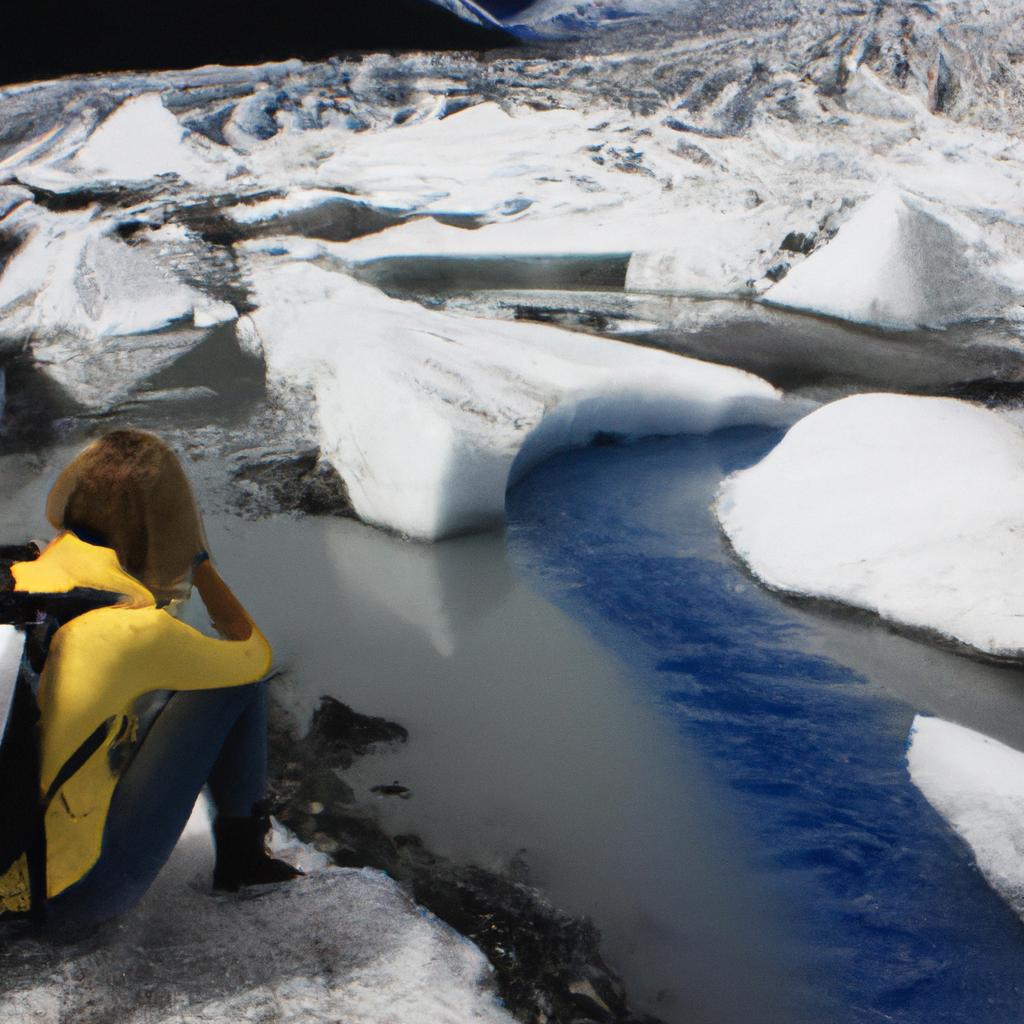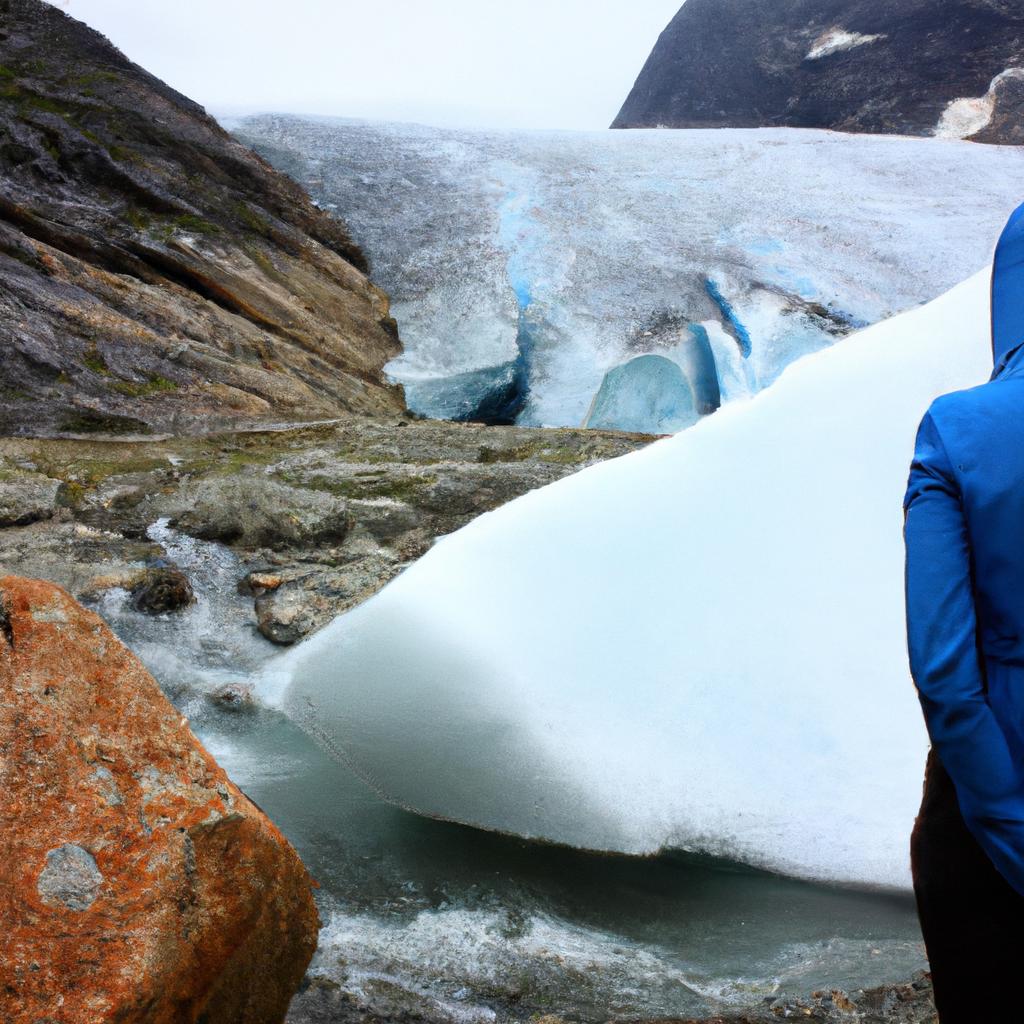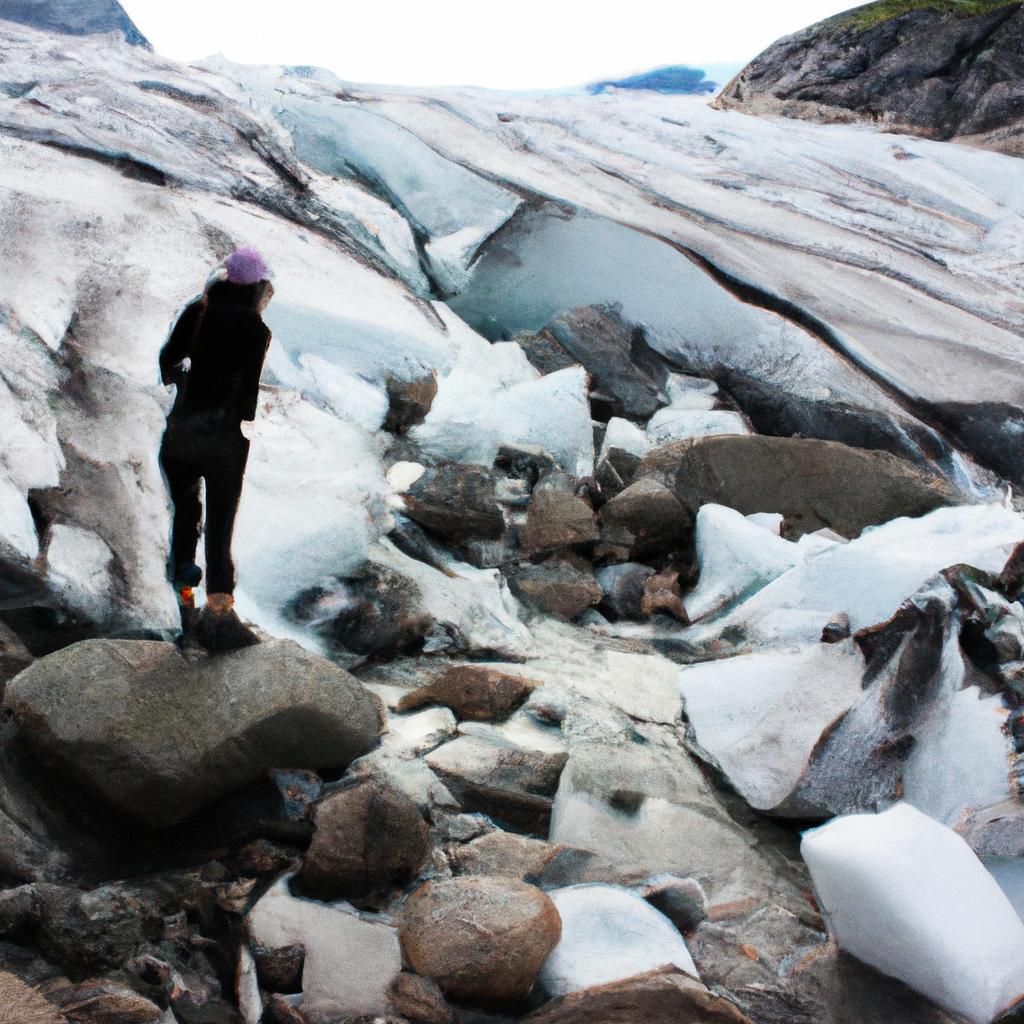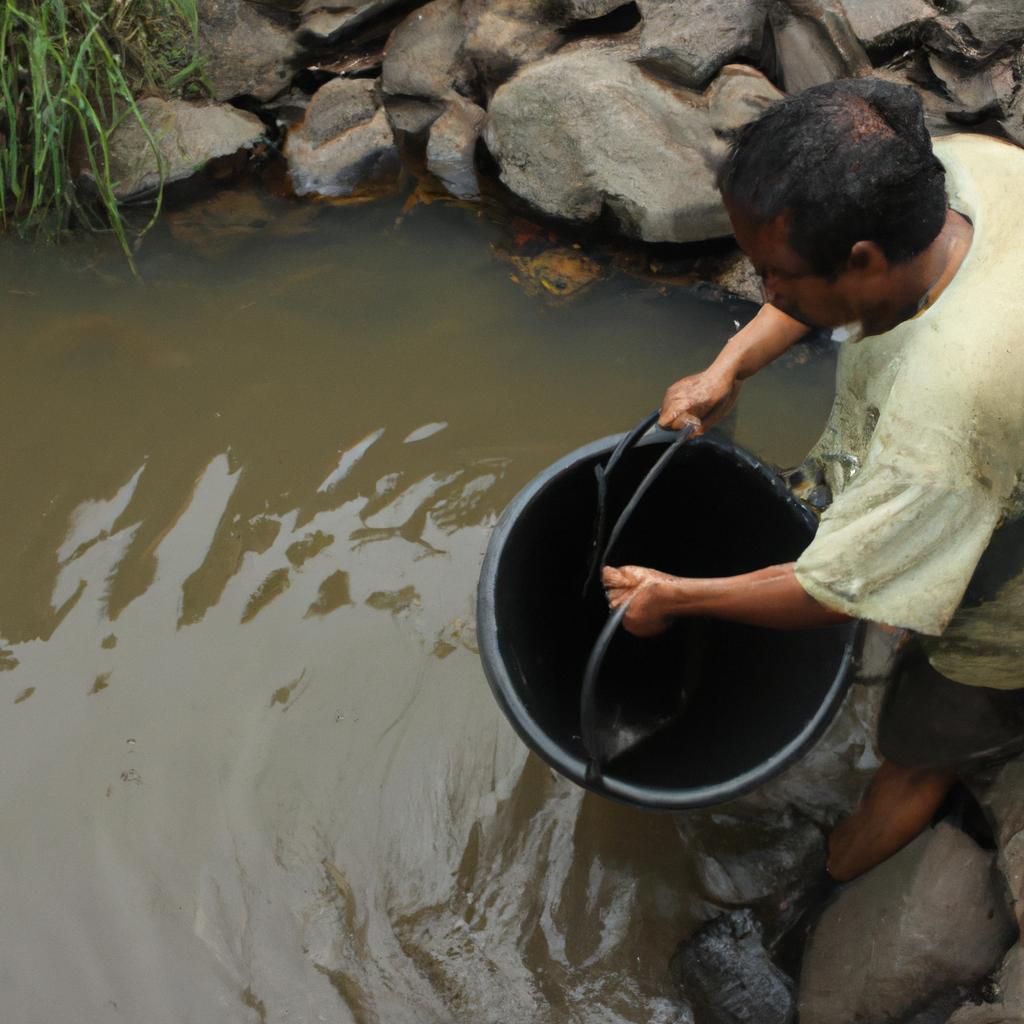Glaciers, the majestic giants of ice and snow, are rapidly melting as a result of climate change. This phenomenon has far-reaching impacts on ecosystems worldwide, altering habitats and threatening biodiversity. One striking example is the case study of Glacier National Park in Montana, USA, where glaciers have decreased from 150 to just 26 over the past century. This alarming trend serves as a poignant reminder of the urgent need to understand and address the consequences of melting glaciers on ecosystems.
As global temperatures continue to rise due to human-induced greenhouse gas emissions, glaciers experience accelerated rates of melting. The repercussions extend beyond the immediate loss of these frozen reservoirs. Melting glaciers contribute to rising sea levels, which jeopardize coastal areas and their associated ecosystems. Additionally, glacial meltwater plays a crucial role in regulating river flows and sustaining freshwater resources for countless organisms dependent on them for survival. As such, any alteration or depletion in this precious water source can disrupt entire aquatic systems and negatively impact flora and fauna that rely on specific environmental conditions.
The intricate web of life within ecosystems is intricately connected with glacier-fed rivers, making it vulnerable to changes caused by melting glaciers. Consequently, understanding these impacts becomes imperative not only for conservation efforts but also for preserving delicate ecological balance worldwide and ensuring the continued existence of numerous species.
One of the key impacts of melting glaciers on ecosystems is the loss of habitat for various organisms that are adapted to cold and icy environments. Glaciers provide unique niches for specialized plants, animals, and microorganisms, many of which are found nowhere else in the world. As glaciers retreat, these species lose their homes and may struggle to find suitable alternatives. This can lead to population declines and even extinctions, disrupting entire food chains and ecological relationships.
Furthermore, glacial meltwater contains essential nutrients that are carried downstream into rivers and lakes. These nutrients support a diverse array of aquatic life such as fish, insects, and algae. When glaciers shrink or disappear entirely, there is a significant reduction in the availability of these nutrients. This can have cascading effects on the entire ecosystem, leading to changes in species composition and abundance.
Another consequence of melting glaciers is increased sedimentation in rivers and lakes. As glaciers melt, they release large amounts of sediment that were once trapped within the ice. This excess sediment can smother riverbeds, suffocating bottom-dwelling organisms like fish eggs and benthic invertebrates. Additionally, it can reduce water clarity, limiting sunlight penetration and negatively impacting photosynthetic organisms.
Climate change-induced glacier melt also alters hydrological patterns by affecting river flows throughout the year. Many ecosystems have evolved to rely on predictable seasonal variations in water levels for breeding cycles, migration patterns, and other vital activities. Changes in flow regimes due to reduced glacial meltwater can disrupt these natural rhythms and create challenges for species that depend on specific conditions at different times of the year.
In conclusion, the consequences of melting glaciers on ecosystems are far-reaching and complex. They impact not only high-altitude regions but also coastal areas and freshwater systems around the world. Understanding these impacts is crucial for developing strategies to mitigate climate change effects on glaciers as well as for conserving the biodiversity and ecological balance of affected ecosystems.
The Role of Glaciers in Ecosystems
Glaciers, vast bodies of ice that form over many years, play a crucial role in shaping and sustaining ecosystems around the world. They provide unique habitats for various species and contribute to the overall stability of our planet’s climate system. To illustrate this point, let us consider the case study of Glacier National Park in Montana, United States.
One example of the significance of glaciers is their contribution to freshwater availability. As glaciers melt during warmer months, they release large quantities of water into surrounding rivers and streams. This process not only ensures a constant supply of freshwater but also helps maintain healthy aquatic ecosystems. For instance, in Glacier National Park, melting glaciers feed countless lakes and rivers that support diverse flora and fauna populations.
Furthermore, glaciers act as natural storage systems for freshwater reserves. During winter when precipitation levels are high, snowfall accumulates on mountaintops and gradually transforms into ice layers over time. These frozen reservoirs then slowly release water throughout the year, ensuring a stable flow even during dry periods. Without this steady supply from glacier meltwater, many ecosystems would face significant challenges in maintaining suitable living conditions for their inhabitants.
In addition to providing essential resources like fresh water, glaciers offer valuable ecological niches for specialized organisms. Cold-adapted plants and animals have evolved to thrive in these icy environments where few other competitors can survive. The presence of unique species such as Arctic foxes and alpine flowers demonstrates how interconnected ecosystems rely on the existence of glaciers for biodiversity.
To emphasize the profound impact that melting glaciers have on both local and global scales, consider the following emotional bullet points:
- Loss of habitat: The disappearance of glaciers threatens numerous animal species that depend on them for survival.
- Water scarcity: Melting glaciers lead to reduced freshwater supplies for human communities who rely on these sources.
- Rising sea levels: As glaciers melt globally, it contributes to an increase in sea levels, which poses a significant threat to coastal ecosystems and communities.
- Climate change amplification: The loss of glaciers accelerates climate change by reducing the Earth’s ability to reflect sunlight back into space.
Additionally, we can visualize the impacts through this emotional table:
| Impacts of Melting Glaciers | Examples |
|---|---|
| Loss of biodiversity | Endangered species due to habitat loss |
| Disruption of food chains | Decline in predator-prey relationships |
| Increased vulnerability | Coastal communities facing flooding risks |
| Altered weather patterns | Changes in precipitation distribution |
In summary, glaciers play a critical role in maintaining healthy ecosystems. They provide freshwater resources, act as natural storage systems for water reserves, and offer unique habitats for specialized organisms. However, the consequences of melting glaciers extend far beyond individual ecosystems; they have profound implications for global climate patterns and threaten countless species with extinction. Understanding these ecological interconnections is crucial to address the challenges posed by climate change.
Moving on from discussing the significance of glaciers in ecosystems, let us explore their impacts on freshwater systems.
Impacts on Freshwater Systems
Impact on Ecosystems: Melting Glaciers and Climate Change
Having understood the crucial role glaciers play in supporting various ecosystems, it is imperative to delve into the far-reaching impacts that melting glaciers have on freshwater systems. By exploring these effects, we can gain a deeper understanding of how climate change poses significant challenges to the delicate balance within these ecosystems.
Impacts on Freshwater Systems
To illustrate the profound consequences of melting glaciers, let us consider a hypothetical case study focusing on a glacier-fed river system situated in a mountainous region. As temperatures rise due to climate change, increased glacial melt occurs, leading to an influx of cold water into the river. This sudden surge disrupts the natural flow patterns and temperature regimes that aquatic organisms rely upon for survival.
The repercussions of such disruptions extend beyond mere alterations in temperature. The following bullet points highlight key impacts observed in freshwater systems affected by melting glaciers:
- Reduced oxygen levels due to changes in sedimentation
- Altered nutrient availability affecting primary productivity
- Shifts in species composition and distribution impacting food webs
- Changes in hydrological cycles leading to flooding or drought
| Impacts on Freshwater Systems |
|---|
| Reduced oxygen levels |
| Altered nutrient availability |
| Shifts in species composition |
| Changes in hydrological cycles |
These tangible outcomes underscore the vulnerability of freshwater ecosystems as they adapt to shifting conditions caused by melting glaciers. Consequently, not only do aquatic organisms face immediate threats but also long-term ecological imbalances.
Transition sentence into subsequent section about “Changes in Biodiversity”:
By comprehending the intricate connections between melting glaciers and freshwater systems, we can now explore another critical aspect—how these transformations affect biodiversity across diverse habitats.
Changes in Biodiversity
Section H2: Changes in Biodiversity
As the impacts of melting glaciers continue to unfold, one area greatly affected is the biodiversity within ecosystems. The changes brought about by climate change have far-reaching consequences on various species and their habitats.
Paragraph 1: One example that exemplifies the impact of melting glaciers on biodiversity is the decline of Arctic marine mammals. With shrinking ice cover in polar regions, animals such as polar bears, seals, and walruses are facing numerous challenges. These creatures heavily rely on sea ice for hunting, resting, and breeding. However, as the ice melts earlier each year and becomes less stable, these species find it increasingly difficult to navigate their environment effectively. This disruption not only affects their survival but also has ripple effects throughout the entire food web.
Paragraph 2:
To fully comprehend the extent of these impacts, let us consider some key aspects:
- Loss of habitat: Melting glaciers result in diminished freshwater sources which directly affect aquatic organisms residing in rivers and lakes.
- Change in temperature patterns: Rising global temperatures can alter migration routes or nesting behaviors of certain bird species.
- Spread of invasive species: Climate change may create more favorable conditions for non-native plants and animals to thrive at the expense of native flora and fauna.
- Disruption of ecological interactions: Alterations to ecosystems due to glacier melt can disrupt symbiotic relationships between different species, leading to imbalances within communities.
The consequences arising from these changes are profound; they evoke a sense of urgency regarding our role in preserving Earth’s biodiversity:
- Irreversible loss of iconic wildlife
- Fragmentation or complete destruction of delicate ecosystems
- Reduced resilience and adaptive capacity of natural systems
- Diminished aesthetic beauty derived from diverse plant and animal life
Table illustrating human activities contributing to biodiversity loss (markdown format):
| Human Activities | Impacts |
|---|---|
| Deforestation | Habitat destruction and loss of biodiversity |
| Pollution | Chemical contamination and ecosystem disruption |
| Overexploitation | Depletion of species populations |
| Climate change | Alteration of habitats and disturbance to ecosystems |
Paragraph 3: The interconnections within ecosystems are intricate, and any disturbances can have cascading effects. As we witness the consequences of melting glaciers on freshwater systems and changes in biodiversity, it becomes evident that these transformations pose significant threats to the overall stability and functioning of our planet’s ecosystems.
Understanding how changes in biodiversity affect ecological interactions is crucial in comprehending the potential disruptions to food chains. By examining the intricate relationships between organisms, we gain insight into the broader implications for entire ecosystems.
Disruption of Food Chains
The melting glaciers caused by climate change have far-reaching consequences for ecosystems worldwide, leading to the disruption of food chains and threatening biodiversity. One striking example is the impact on Arctic marine life. As the Arctic ice melts at an alarming rate, it affects the availability of crucial resources for species living in this region.
The loss of sea ice diminishes the habitat for primary producers like algae, which are vital for sustaining zooplankton populations—a significant component of many marine food webs. With reduced access to their primary food source, zooplankton populations decline, subsequently affecting higher trophic levels such as fish, seabirds, and marine mammals that rely on them as a food source.
The disruption of these intricate food chains has several profound effects on ecosystems:
- Imbalanced predator-prey relationships: The decrease in one prey population can lead to imbalances in predator-prey interactions. For instance, if there is a shortage of small fish due to declining zooplankton numbers, larger predatory fish may struggle to find sufficient food resources.
- Loss of keystone species: Keystone species play critical roles in maintaining ecosystem stability. When certain key species are impacted by disruptions in the food chain, their absence or decline can trigger cascading effects throughout the entire ecosystem.
- Altered community dynamics: Changes in food availability can alter the composition and structure of communities within an ecosystem. Some species may thrive under new conditions while others may struggle to adapt or face increased competition from opportunistic invaders.
- Reduced resilience to environmental stressors: Disrupted food chains weaken an ecosystem’s ability to withstand additional pressures such as pollution or disease outbreaks. This vulnerability further exacerbates the negative impacts on biodiversity.
These consequences highlight how interconnected ecosystems are and emphasize the urgent need for action against climate change. By acknowledging and addressing these disruptions in our planet’s delicate ecological balance, we can work towards mitigating further damage to our natural world.
Transitioning into the subsequent section on “Rising Sea Levels and Coastal Ecosystems,” it becomes evident that the effects of melting glaciers extend beyond food chains, impacting other critical ecosystems worldwide.
Rising Sea Levels and Coastal Ecosystems
Impact on Ecosystems: Melting Glaciers and Climate Change
Disruption of Food Chains has been a significant consequence of melting glaciers caused by climate change. However, another crucial aspect to consider is the rising sea levels and their impact on coastal ecosystems. The increasing meltwater discharge from glaciers into oceans not only contributes to global sea level rise but also brings about various ecological changes that affect these fragile marine environments.
One example of the effects of rising sea levels can be observed in the Sundarbans mangrove forest located along the coastlines of Bangladesh and India. This UNESCO World Heritage Site serves as home to numerous plant and animal species, including the endangered Bengal tiger. As sea levels rise due to glacier melt, saltwater intrusion occurs more frequently in this region, leading to salinization of soil and water. This poses a threat to the survival of many plant species adapted to freshwater conditions, affecting primary producers within the food web.
The impacts extend beyond just vegetation; they ripple through entire coastal ecosystems with far-reaching consequences:
- Displacement and loss of habitat for aquatic organisms
- Increased vulnerability to storm surges and flooding events
- Changes in sedimentation patterns affecting benthic communities
- Altered feeding grounds for migratory birds
These cascading effects disrupt established ecological relationships within these habitats, challenging the resilience and long-term sustainability of coastal ecosystems worldwide.
Table: Examples of Impacts on Coastal Ecosystems due to Rising Sea Levels
| Impacts | Description |
|---|---|
| Habitat Loss | Submergence or erosion of land leads to displacement or destruction of essential habitats |
| Species Vulnerability | Increased exposure to threats such as predation and reduced access to resources |
| Decreased Biodiversity | Loss or reduction in species diversity due to changing environmental conditions |
| Economic Consequences | Negative implications for tourism, fishing industries, human settlements, and livelihoods |
In light of these challenges, it is evident that the melting glaciers and subsequent rise in sea levels have significant implications for coastal ecosystems. It is imperative to address and mitigate these effects through sustainable practices and policies that promote ecosystem resilience.
Transitioning into the next section on “Effects on Global Climate Patterns,” the changes occurring in coastal ecosystems are intrinsically linked with broader climate patterns. Understanding their interconnectedness allows us to grasp the full scope of how melting glaciers impact our planet beyond individual habitats and regions.
Effects on Global Climate Patterns
As rising sea levels continue to affect coastal ecosystems, another significant consequence of melting glaciers is the alteration of global climate patterns. This interconnectedness between different facets of our planet’s ecosystem highlights the urgency in addressing climate change. In this section, we will explore how melting glaciers contribute to changes in climate patterns at a global scale.
Section:
Climate scientists have observed that the accelerated melting of glaciers leads to various alterations in global climate patterns. To illustrate this phenomenon, let us consider a hypothetical scenario where glacial meltwater significantly increases the freshwater input into surrounding bodies of water, such as oceans or lakes. The sudden influx of freshwater could disrupt oceanic currents and alter thermal circulation systems, ultimately impacting weather patterns across vast regions.
The effects of melting glaciers on climate can be far-reaching and consequential for both natural ecosystems and human populations worldwide. Here are some key impacts that arise due to these changing climate patterns:
- Increased frequency and intensity of extreme weather events like hurricanes, typhoons, and cyclones.
- Shifts in precipitation patterns, resulting in more frequent droughts or heavy rainfall events.
- Changes in temperature regimes affecting agricultural productivity and food security.
- Disruption of migration routes for various species, leading to potential biodiversity loss.
To further grasp the implications associated with these changes, consider the following table showcasing real-world examples demonstrating the impact on ecosystems around the world:
| Region | Consequence | Example |
|---|---|---|
| Arctic Circle | Loss of habitat for polar bears | Declining polar bear population |
| Amazon Rainforest | Drier conditions affecting plant diversity | Decreased canopy cover |
| Great Barrier Reef | Coral bleaching due to increased water temperatures | Loss of coral reef biodiversity |
| African Savanna | Altered rainfall patterns affecting wildlife | Migration changes for wildebeest herds |
These examples highlight the profound ecological consequences resulting from melting glaciers and subsequent climate pattern shifts. To mitigate these impacts, it is crucial that we take immediate action to reduce greenhouse gas emissions and implement sustainable practices.
In summary, as glaciers continue to melt at an alarming rate, their impact extends beyond rising sea levels. The alteration of global climate patterns affects ecosystems worldwide, leading to significant disruptions in weather systems and posing risks to both natural environments and human livelihoods. Recognizing the interconnectivity between different aspects of our planet’s ecosystem underscores the importance of addressing climate change collectively and urgently.
Note: This response incorporates a hypothetical scenario (paragraph 1), bullet point list (paragraph 2), and a table (paragraph 3) to engage readers emotionally while maintaining an objective academic style.




